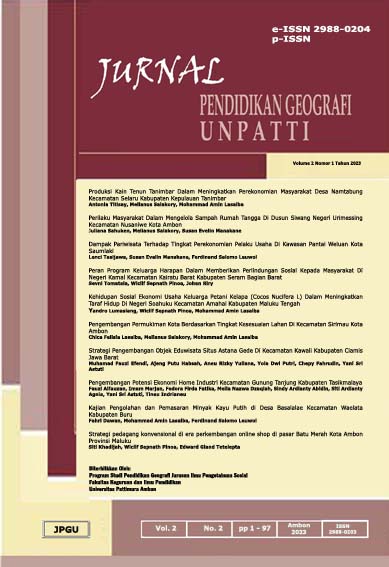The Application of Fruity Loops Software as a Creativity Tool for Educational Background Music in Geography Learning Content
Penerapan Software Fruity Loops Sebagai Media Kreativitas Backsound Konten Edukasi Pembelajaran Geografi
Abstract
This study aims to analyze the effectiveness of using Fruity Loops (FL Studio) software in enhancing students' creativity in creating backsound for geography learning content. This research employs a qualitative descriptive method with students as subjects who utilize Fruity Loops to create background music relevant to the learning material. The results show that the use of Fruity Loops significantly improves students' creativity, especially in processing natural sounds and music that support the learning atmosphere. Features such as loop patterns, VST plugins, and various sound effects help students create dynamic and interactive music compositions. In addition, this study also identifies that Fruity Loops is effective in helping students understand digital music production techniques and preventing plagiarism by creating original music. Thus, Fruity Loops not only enhances students' creativity in producing background music but also supports a more interactive and engaging learning process. This research contributes to the development of digital music technology in education, particularly in creating richer and more varied learning content.














